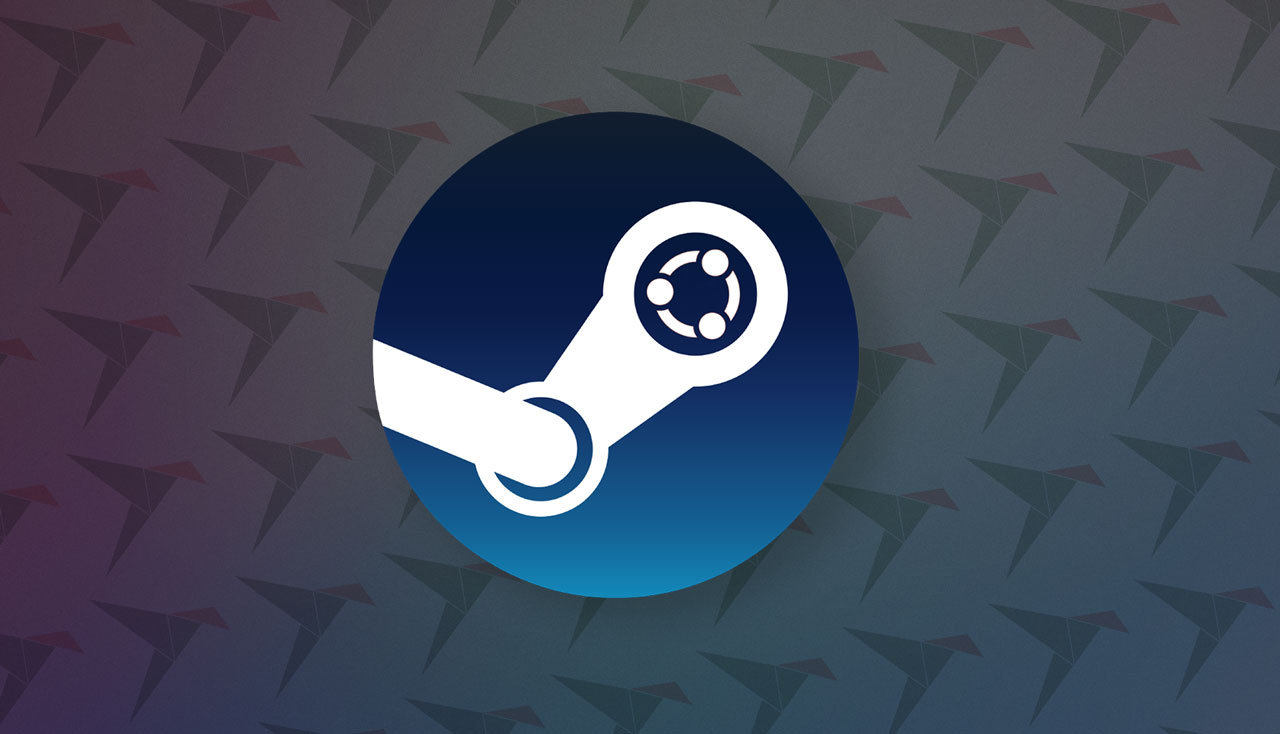- cross-posted to:
- news@lemmy.linuxuserspace.show
- cross-posted to:
- news@lemmy.linuxuserspace.show
Timothée Besset, a software engineer who works on the Steam client for Valve, took to Mastodon this week to reveal: “Valve is seeing an increasing number of bug reports for issues caused by Canonical’s repackaging of the Steam client through snap”.
“We are not involved with the snap repackaging. It has a lot of issues”, Besset adds, noting that “the best way to install Steam on Debian and derivative operating systems is to […] use the official .deb”.
Those who don’t want to use the official Deb package are instead asked to ‘consider the Flatpak version’ — though like Canonical’s Steam snap the Steam Flatpak is also unofficial, and no directly supported by Valve.

I’m sure Canonical’s neverending death march towards Snap, along with the OS running outdated packages, is why Valve no longer uses Ubuntu for SteamOS development. The greatest April Fools was Ubuntu dropping Snaps because so many people were saying how they could go back to using Ubuntu again…then they noticed it was a joke and the sadness set in.

The article says that steam showing a notice on snap installs that it isn’t an official package and to report errors to snap would be extreme. But that seems pretty reasonable to me, especially since the small package doesn’t include that in its own description. Is there any reason why that would be considered extreme, in the face of higher than normal error rates with the package, and lack of appropriate package description?

It’s not extreme. This is an opinion piece posted on OMGUbuntu, so I’ll let you figure out where their biases lie.

Honestly, that seems like the nicest way to solve the problem. Afaik Valve would be fully within their rights to C&D them from unofficially rehosting their binaries. In any other situation, that would be a blatant security risk.

Canonical’s SteamSnap is Causing Headachesfor Valve
Thanos snapped the uptime

I don’t even want to hate on Snap, I just think Flatpak is probably superior in almost every way and it’s probably not great that there are three competing formats for “applications with dependencies included”. It was supposed to be “package your app to this format, dear developer, so everyone can use it no matter the distro they use”, now it’s a bit more complicated. Frustrating, as this means developers without that many resources will only offer some formats and whichever you (or your distro) prefers might not be available.
I know that you can get every format to work on every distro (AppImages are just single binaries you can execute), but each has their own first class citizen.
By the way, the unofficial Steam Flatpak has been working well for me under Fedora 39 KDE Spin, but an official one would be great to have.

Snap isn’t a standard actually. It’s closed off.

Hence I picked the word “format”.

Mmm.

Every line of snap code that touches your computer is open source, so “closed off” is absolute hyperbole when you are discussing the format

Canonical specifically went out of their way to create a closed ecosystem with snaps, and you think that’s not “closed off” because they only allow you to download the open source parts of the snap software?

I didnt want to hate snap either, until I found out its proprietary technology… on a foss OS… since then I‘m pretty over it - and ubuntu for that matter. I‘ll probably switch to debian once ubuntu 23.10 runs out of support.

Well… Flatpak ships Propietary Software too. And at this point Propietary Software is almost avoidable (unless you have a LibreBoot. I want one too). But it’s reasonable to be frustrated that an operating system as influential as Ubuntu has ended up falling so down in its technology, and that it has the support of a company like Chanonical.
Edit: Thank you for the comments. I didn’t noticed Snap itself is propietary.

Not sure if I understand you correctly. Flatpak itself is not proprietary afaik and while people might make flatpaks of proprietary software, the problem with snap is that the snap system itself is proprietary afaik.
So every open source software packaged in snap gets this proprietary stain added to it. Thats what actually bothers me.

I think they meant that the Snap itself (or part of it) is proprietary. But I’m not sure.

Personally, I don’t get why devs would elect to package for Snap, in favor of Flatpak or AppImage. I guess, if your toolchain offers Snap packaging out of the box, then might as well. But aside from that, do you not just reach fewer users…?

Yes and no. Last time I checked, Ubuntu was the most used desktop Linux OS, and it obviously uses Snap (and has Flatpak disabled by default).

Ah, I hadn’t realized Canonical was so awful as to disable the format everyone else agreed on, but seems you’re right: https://www.omgubuntu.co.uk/2023/02/ubuntu-flavors-no-flatpak

They didn’t “disable the format”
From your own link:
Do keep in mind that “not installed by default” is not the same as “not available to install at all”. To this end, Flatpak continues to be available in the Ubuntu repos, and users of Ubuntu flavors are free to install Flatpak

Well, yeah, you can enable it. But if it’s not active in their GUI software store by default, then many users will not find / look for it. It’s rather important for a package format that you don’t have to separately install it.

Why do you need to have two package formats that do the same thing installed by default? If you could install snaps and flatpaks both from the same store you could have 2 (or 3 if you also installed the .deb) copies of the same app, like steam etc installed, and user sessions and games set up on one wouldn’t be launchable from the other because they all store their state and config in different locations - the only way to know what config your program is launching with would be to inspect and rename the launcher scripts. If you are intending to support naive users this is the absolute worst case scenario. It would be like debian including pacman by default as well alongside apt for maximum user
accessibilityconfusion.
Because many apps will (or would prefer to) only be bundled as Flatpak. I agree that the deduplication is not a trivial problem to solve, even if they might have already solved it for DEBs (I don’t know).
But your entire comment could just as well be a rant why Canonical shouldn’t have introduced Snaps in the first place. It might be good for their bank account, if they can somehow monetize part of the cake, but splitting the cake even further, after it’s already split into DEB, RPM, AppImage, Flatpak, Docker, APK etc., that’s maximum user confusion.

Ubuntu itself never natively came with Flatpak though. Some flavours might have, but their marketshare is also a lot smaller.
Of course, if Ubuntu ever decided to ship with Flatpak natively, that would instantly become the obvious choice.

The thing with AppImages is: it requires FUSE2 which doesn’t really get packaged/included by default anymore in a lot of places and the recommendation is “build on the most old and crusty distro you want to support” which just sounds like a nightmare in multiple ways :)
And with snaps the sandboxing only really works on Ubuntu and nowhere else last time I looked into it (then there is also the entire problem if you want to host your own repository/“storefront”).
So really the only universal sandboxing method that effectivly makes sense is Flatpak.

Just tell the billion dollar company to allow people to download the games on their browser. The Client only exists as a means to DRM and analytics, there’s no actual reason for games not to become standalone.

That’s pretty unfair. Before Valve’s efforts, the first thing we PC gamers asked eachother about a new game was always “could you get it running?”
Three bad old days were quite bad, and they started getting better in lock step with Valve’s improvements to Steam.
Correlation/causation and all that. But for a lot of us Valve earned a lot of goodwill simply by allowing “request a refund” on games that run poorly. (Edit: which was apparently forced on Valve by a government. Valve got lucky there!)

Their refund policy is due to getting slapped around in EU courts, not because valve is benevolent or anything. I do like steam a lot, but it is a near monopoly which acts as DRM to a degree. They did and would abuse that power unless regulated.

I believe their refund policy is actually from ACCC in Australia, rather than European rulings

You’re correct, Australia played a big role in it, and the EU was passing regulation around 2015 on that issue as well. So they got slapped around in Australia and changed it up before getting slapped around in the EU.

As someone who was during those times, your Zgen knowledge is very incorrect. The games did work, including Crisis (original). As to why the myth you hear from fellow Zgen gamers; it’s because graphics cards were invented. Brand new, no one knew what they were doing with them. The companys Renzen and Nvidia started sponsoring games, it’s how they became popular, their logos were part of the game, Metal Gear Solid revengeance is proof of this.
Steam had no part in gaming history, they were not the first online platform. Dell made wild target before Valve Corporation was founded. Lootbox was invented before Steam launched it, Yahoo games (anyone remember them) in japan had the concept down to almost todays standards. Valve had nothing to do with gaming history, they are just known for their lawsuits and anti competitive behavior.

I’m incorrect that my PC games didn’t work on my PC?!
Shit. Thanks for clearing that up.
Your points about Vavle part of the same bullshit are worth raising, though.
But a unified store with reviews, a refund policy, , and installers that actually fucking worked was a really big deal, especially to those of us without bleeding edge hardware - which was most of us.
Edit: and don’t start talking about gaming history to me, I was there for all of it. Pong didn’t come with an installer, it came with the hardware. Turn those paddle knobs folks. Pong is still better than a lot of the shit you kids are playing.

You fake, everyone in the older days knows how the controls work. All except you younger people, you didn’t turn it, you slide it.
https://www.youtube.com/watch?v=FvT8jG1OVdI&tWhat you describe was the Arcade version, not the popular console versions.
Valve is in a lawsuit: https://news.bloomberglaw.com/antitrust/valve-loses-bid-to-end-antitrust-case-over-steam-gaming-platform
Dell did make wild target: https://m.youtube.com/watch?v=ibz8kpsRHdk

you didn’t turn it, you slide it.
Like the cx30 on the popular 8 bit home console Atari 2600 which was a knob you turn?

Flatpak with Fedora 39 must have come a long way. Almost every tutorial with workarounds or discussion of broken features you can find online is now obsolete. It just works out of the box, especially under KDE. Mostly. That makes searching for actual issues extremely hard because I find myself chasing down paths of issues that have long been resolved.

Agreed. the only “workarounds” I’ve needed to do (on arch) is install
gtk-desktop-portal-{gtk,kde}because it’s not included withkde-plasma5for some reason.

I thought that valve distributed statically compiled files

My only complaint about flatpak is that updating them fails like 50% of the time for seemingly no reason, and I just have to run the update command over and over until they are all updated.

I’ve never had an update fail with flatpaks?

It happens constantly both on my laptop (suse) and my Steam Deck (arch). Same exact behavior. I gave up trying to debug it, and I just keep retrying the update command until the list is empty.

I’ve never had anything like this when I used to run arch (with Archivstall). Also not on fedora for months and now back on LMDE.

How are you closing the program? I don’t mean with the X button on the desktop environment. I mean command line programs.

What program? I just let
flatpak updaterun through until it returns me to my shell.
I’m sorry, I must have responded to the wrong comment. That comment was supposed to be in an entirely different conversation.
Edit: Oh, I just reviewed my inbox. I thought you replied to a different comment of mine. I’m so dumb. Carry on.

and it’s probably not great that there are three competing formats for “applications with dependencies included”.
Ok in snap/flatpak but i tink that’s a bit unfair in appimage. First two are runtimes, second is a file format that does stuff with fuse. That’s like saying there should only be one I/O scheduler.
now it’s a bit more complicated
Do native for system/environment stuff and simple projects, flatpak for frontend molochs with lots of dependencies, no?

I don’t think AppImage is a bad technology, but with the comparatively minuscule marketshare Linux desktop has barely any developer/software company can invest the resources to test and maintain packages in all these formats. It’s often not worth it for commercial software to offer packages in every possible format (yeah, yeah, open source is great, I know; still, commercial software is real and many people (need to) rely on it).
I’ve been using Fedora for a couple of weeks (one of my New Year’s Resolutions is to completely ditch Windows, so my main computer is now on Fedora :D) and most of the software I use is either available in the official repositories, as an rpm or a Flatpak. But there’s the odd piece of software where I can only find AppImage or Snap versions, and often if a Flatpak is available, it’s non-official (Steam for example).
So, you potentially have packages from the package manager (mostly deb- or rpm-based, and whatever format Arch uses), then you have AppImage, Snap and Flatpak and some applications are simply an archive with an executable binary. That’s a far cry from installing everything from one or two places, which I feel like used for be one of the selling points for Linux (years ago).
Nothing most users can’t handle, but it could certainly be more streamlined. Now before I install software, I check the website, then I check whether they offer an official flatpak or an rpm package if it’s not in the official Fedora repositories, and if they don’t, I check if there’s an unofficial one on Flathub, which sometimes has implications. If there’s no Flatpak whatsoever, I fall back to standalone binaries/archives when available. It’s probably easier to install software on Windows now: download the installer from the official website, install it and done. Most software auto-updates itself.
Having options is great and one of the great things about OSS, but I feel like when it comes to “standards” like these, more collaboration instead of reinventing the wheel over and over again would be better.

Canonical is a joke

Canonical does a heck of a lot more for the Linux ecosystem than snap. For instance they have an entire (growing) team dedicated to fixing reported bugs in various upstream packages.

Would be cool if they just straight up supported flatpaks. That’s been my main way of gaming for a couple years now, and it works great. The downside is that the folder structure is confusing so it makes things like modding pretty difficult.

Maybe they’ll get there eventually, considering this is their method of choice for installing 3rd party apps on SteamOS 3.0.

Ubuntu used to get a lot of undeserved hate but lately the hate feels deserved. Ubuntu has been the face of the usable desktop Linux for a long time and they just keep tripping over themselves every time they try to move forward.
Their intentions are usually good. A lot of things they propose usually end up being adopted by the community at large (just not their implementation). They seem to just yank everyone’s chain a little too hard in the direction we’re eventually going to go and we all resent them for that.
Off the top of my head, there was Upstart (init system), there was unity (desktop), and now snaps (containerized packaging). All of these were good ideas but implemented poorly and with a general lack of support from the community. In almost each case in the past what’s happened is that once they run out of developers who champion the tech, they eventually get onboard with whatever Debian and Rhel are doing once they were caught up and settled.
Valve’s lack of interest in maintaining the snap makes sense. The development on the Ubuntu platform is very opinionated in a way where the developers of the software (valve) really want nothing to do with Canonicals snaps.
On another note: my favorite thing about the Ubuntu server was LXD + ZFS integration. Both have been snapified. It was incredibly useful and stable. Stephane Graber has forked the project now into INCUS. It looks very promising.

This might be an unpopular opinion but I really don’t get this trend of wanting to containerized just about everything, it feels like a FOTM rather than doing something that makes sense.
I mean, containers are fantastic tools and can help solve compatibility problems and make things more secure, especially on servers, but putting everything into containers on the desktop doesn’t make any sense to me.
One of the big advantages Linux always had over Windows is shared components, so packages are much smaller and updating the whole system is way faster, if every single application comes with its own stuff (like it does on Windows) you lose that advantage.
Ubuntu’s obsession with snaps is one of the reasons I stopped using it years ago, I don’t want containers forced upon me, I want to be free to decide if/when to use them (I prefer flatpack and appimage).
Debian derivatives that don’t “reinvent the wheel” is the way to go for me, I’ve been using Linux MX on my gaming desktop and LMDE on laptop for years and I couldn’t be happier, no problem whatsoever with Steam either.

I agree with a lot of your points but I do think containers a great solution.
I’ve been a really big fan of Universal Blue lately. It presents a strong argument for containerizing everything. Your core is immutable and atomic which makes upgrades seamless. User land lives in a container and just gets layered back on top afterwards.

Wasn’t there MIR as well?

Yeah, I think as the replacement for x before Wayland?

LXD got better with the AGPL license, so Canonical did the right thing there.
(I know they added a CLA but it’s still way better than the permissive license they had before)

I do think the idea behind snap isn’t all about pushing the Linux platform as such forward, but to specifically gain a market advantage to Ubuntu.
Why else is finding documentation for changing the default store so difficult? And I don’t think you can even have multiple “repositories” there–quite unlike all other Linux packaging systems out there. (Corrections welcome!)

I know the “Arch BTW” meme exists for a reason, but one of the reasons I haven’t been able to drag myself away from Arch-based distros in recent years is that it allows me to always have current versions of my software while also just not having to care about all this appimage/flatpak/snap brouhaha.
I guess it’s somewhat of a “pick your poison” kind of situation, but I find dealing with the typical complaints about Arch based distros to be both less of a problem than detractors would have you believe, and less of a headache than having to pick one of three competing alternative packaging approaches, or worse, to use a mix of them all. Standing on the sidelines of the topic it seems like a small number of people really like that these options exist, and I’m happy for those people. But mostly I’m grateful that I don’t have to care about this kind of thing.
Edited to add: Seeing how this thread has developed in the past 5 hours convinces me anew that “on the sidelines” is where I want to stay on this topic. 😁

I’ve always found the most time consuming thing about arch is having to spend half your life telling everyone you use it.

Nah, it’s repeating the installation process until you finally get enough stuff working to have internet, and then you can bootstrap installing every other bit of software that you need. Thank goodness for rolling release - I can’t imagine having to go through that again.

You can install Arch directly from a UEFI shell over the Internet: https://archlinux.org/releng/netboot/
If your BIOS has a UEFI shell that supports DHCP, HTTP and IPv4 PXE you can load the ipxe-arch.efi over HTTP and start installing.
I haven’t done a vanilla arch install for years either, because if that sort of thing is fun for some folks great, but it was only fun once or twice for me. I think a lot of the vanilla arch faithful end up scripting it for fresh installs.
But, FWIW there’s always endeavouros, manjaro, and I’m sure other Arch derivatives I’ve forgotten about. I just did an endeavouros install on new hardware I was given last weekend, and it’s certainly no harder to install than Ubuntu.

I haven’t used it in years, so hard to remember now.

100% all this. Canonical has been pushing snaps for awhile, and I wonder if the 12 year LTS for Ubuntu is part of that strategy - want something newer? It’s in the snap store. snap is terrible, worse than flakpak and appimage - but just as you say, as an arch user I don’t have to care. Whatever I want is probably in the AUR if not the main repos. Rolling distros, done right (arch), are an amazing experience.

Yup, the AUR is a godsend. I barely touch the other methods and only use AppImages when I’m too lazy.

Appimages when you’re lazy? The fact you have to chmod them is annoying compared to an AUR helper

I mean Dolphin gives a prompt for the same thing when I launch it.

I think if we could drag users (at least gamers) away from these Debian/Ubuntu based distros we could have developers just shipping packages that wouldn’t need to be compatible with some ancient LTS library release, and maybe we wouldn’t need appimage/flatpak/snap at all anymore (or at least only in rare cases).

I feel the same. My entry distro was ubuntu, and every time I updated major version the whole installation exploded and i had to reinstall it from scratch.
Luckly for me now i use Debian and updating major release is smooth af. Already went through 3 major updates and 0 problems.
Just swap to Debian, Valve. And snap is engineered to waste your time, imo.

Valve is on arch.
This isn’t steamOS, just customers using Ubuntu.

Isn’t SteamOS based on Debian, not Arch?
EDIT: nvm, it used to be Debian, but the newer versions for steamdeck are based on Arch.

As far as I know, SteamOS is already based on Debian. The dev is complaining about users trying to install steam on their own Ubuntu installs, not SteamOS.
EDIT: nvm, it used to be Debian, but the newer versions for steamdeck are based on Arch. Apparently they wanted rolling updates so that it would be easier to push out changes more frequently.

Just to play devils advocate, why don’t they simply officially support the Snap store?

Bc/ they’re already packaging an deb-package. Why should the do that snap thingy?

Because it’s the same story as with Mir or Upstart: it will die, because its half assed and tailored to Ubuntu, this time with dubious non-free parts even

The proprietary parts is what bothers me. Why would you make a foss OS/fork and put proprietary shit in? Its like taking something good and pure and instead of making it better or just different, make it worse.

- Nobody needs it
- It’s a lot of work

Snaps just aren’t ready yet.

Okay…
What’s a Steam Snap? I don’t know what that is
Snaps are a relatively recent way of packaging application installations in certain flavors of Linux. Steam is Valve’s game distribution platform (amongst other things).
There’s an unofficial Snap package to install Steam and it apparently doesn’t work so good

It’s also worth mentioning that the snap system is quite disliked by a lot of users for various reasons, like stuff not working right.
I suppose this article is a good example of snaps not working right.



